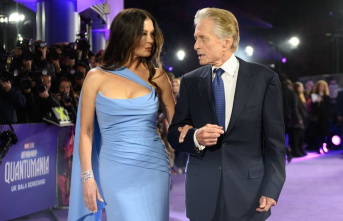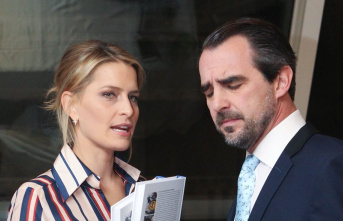" We exist, we are alive. Hayyou ala al Hayet ". In Re-existence, his latest creation, the dancer and choreographer Nawel Skandrani said nothing more. From the first minutes, she moved off the plateau, near the singer and songwriter Jawhar Basti, and do not move until the end of the show, presented at the last Journées théâtrales de Carthage (JTC). In his silence, his few words resound. All the more that, each in its own way, the seven young performers – Houssemeddine Achouri, Haroun Ayari, Ashraf Ben Hadj m'barek, Meriem Ben Hamida, Moayed Ghazouani, Sarra Mokaddem and Malek Zouaïdi – taking soon in possession of the stage extends them by sharing a piece of their personal history. Their resistance by the item dance in particular, but also by the theatre, music, circus and video. Transmission room, Re-existence says and what Nawel Skandrani has advocated for twenty years as a leading figure of contemporary dance in Tunisia : freedom of expression and the openness to the other. The meeting of languages, cultures.
The central idea of Nawel Skandrani, who has a long career as a choreographer in Palestine or Syria - is the question of the resistance of the artist in the context of political, social, cultural, oppressive, and her refusal to let themselves be dispossessed of their inalienable right to freedom. © Olivier Touron
In this room, as the six others that she has created since the birth in 1997 of the company that bears his name, the vocabulary deployed by dancers and actors testifies to the wealth of the course of Nawel Skandrani. His classical training, which began in Tunisia in a school of dance in private and then at the national Conservatory of music, and continued in France, Italy and the United States. Of discovery with Martha Graham and Merce Cunningham in modern dance that develops, as well as modern jazz. The theatrical experiences that it leads to his return to Tunisia in 1988, also contribute to the millefeuille of Re-existence. As is the creation, in 1992, the national Ballet, which she ran for four years. Where she begins to forge a style at the crossroads of disciplines that it has since never ceased to evolve. A test of this. As for Nawel Skandrani dance participates in the great issues of the time. It has its word to say, dramas like the hopes of today.
The Point Africa : In Recapitulatio (2015), your previous creation, you to put into scene a couple lonely, misunderstood, in the face of chaos. Of " human beings lack of love, a territory lack of Art ", you say on the internet site of your company. In Re-existence, you put the emphasis on the faculty of the transformation of the world of the artist. Is this for you a suite ?
Nawel Skandrani : Recapitulatio was mostly a summary of twenty years of personal and professional life. With Sergio Gazzo, who signs the creation video of my shows for many years, we have recycled images which sometimes lasted for what signified the dancers, and sometimes were in contradiction with their actions. Because if I like to mix disciplines in my parts, this is to deepen the meaning. In order to incorporate not only the intensity, but also of the contradiction. This is also the case in Re-existence, where in addition to my accomplice Sergio Gazzo, I found the musician Jawhar Basti, who has worked on several of my creations, and who has composed the music of it, that he plays live. Each piece is a little bit of the result of the previous one. After the very personal and intimate Recapitulatio, I needed to return two items that feed a lot to my dance : the work of the troupe and the transmission.
The desire to talk about Tunisia in a positive way is also apparent, especially through the testimony of the interpreters, who join the words with the gestures. Why this choice ?
The current trend in Tunisia, in art as elsewhere, is the lamentation. In pathos. But I believe that to move forward, it is necessary to change speech. Give to see and hear the people who are struggling to improve the social, economic, political and difficult of the country – that I do not deny, on the contrary. The artists are part of it. We have a role to critique, of resistance to a political, social and cultural that we hoped to see change at the time of the revolution, but which remains, unfortunately, very oppressive. And the problem is not just of the islamist party Ennahda : we see today that many parties in the opposition under Ben Ali have returned the jacket. Convinced that the resistance of everyday life that lead many artists and other citizens against the corruption and the violation of freedom of expression are indispensable, it is what I wanted to hear in Re-existence. If the body expresses things that words cannot have access to it, the reverse is also true.
do you Want to say that a form of censorship, has remained ? The extent to which affect-does she dance ?
If the censorship was displayed under Ben Ali, it continues under an insidious form since the revolution. On the one hand because, as I said earlier, the people who run the country have not changed much, the other because the cultural revolution has not yet taken place. The dance, however, has been fairly unscathed by the attacks on freedom of expression represented by the committees of censorship. Unlike other artistic disciplines such as theatre and the cinema, the dance was not funded until 2010. For the ministry, so it was as if it didn't exist. She has often been able to be more free, more irreverent than the other arts. Today, it is in the same boat.
The subsidy granted to the dance in 2010 lead to a development, and a recognition of this discipline in Tunisia ?
In 2010, it was I who claimed a grant to the minister of Culture of the time, the last of the Ben Ali government. With a few other artists, I worked for years in Tunisia, both to create shows and to train dancers. It is not enough to be able to say what is in your heart, it is necessary to have the means to do it in a nice way, that we match. Otherwise, the aesthetics remain frozen, which is still largely the case in the landscape of choreography is tunisian, which is still quite embryonic. Very few artists manage to register in time : some give up, others decide to continue their career abroad.
1 2 Read moreConsult our folder : The Major maintenance Point Africa
Date Of Update: 28 July 2020, 18:33










